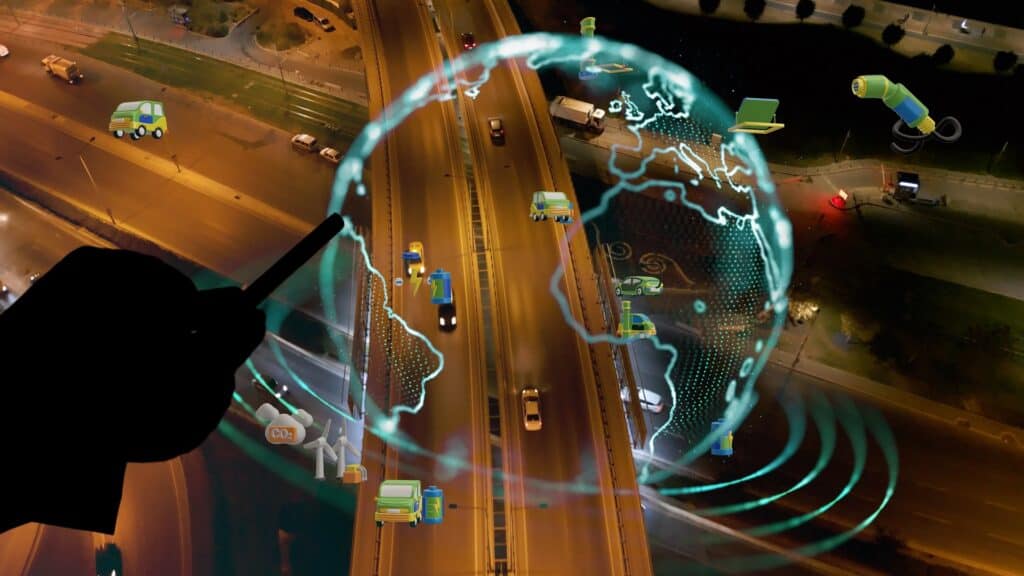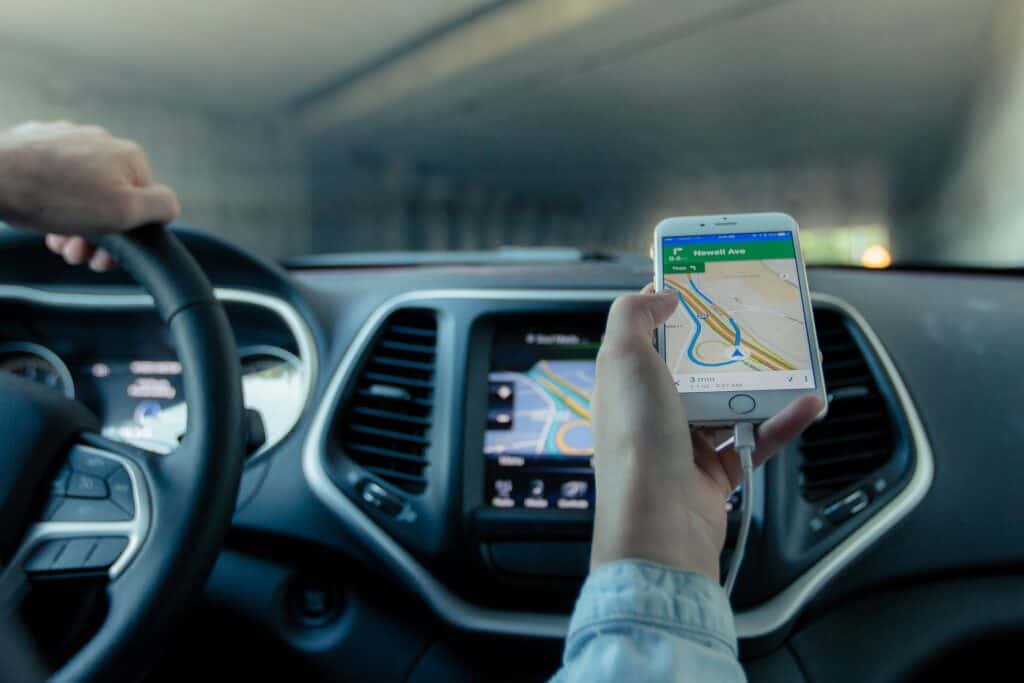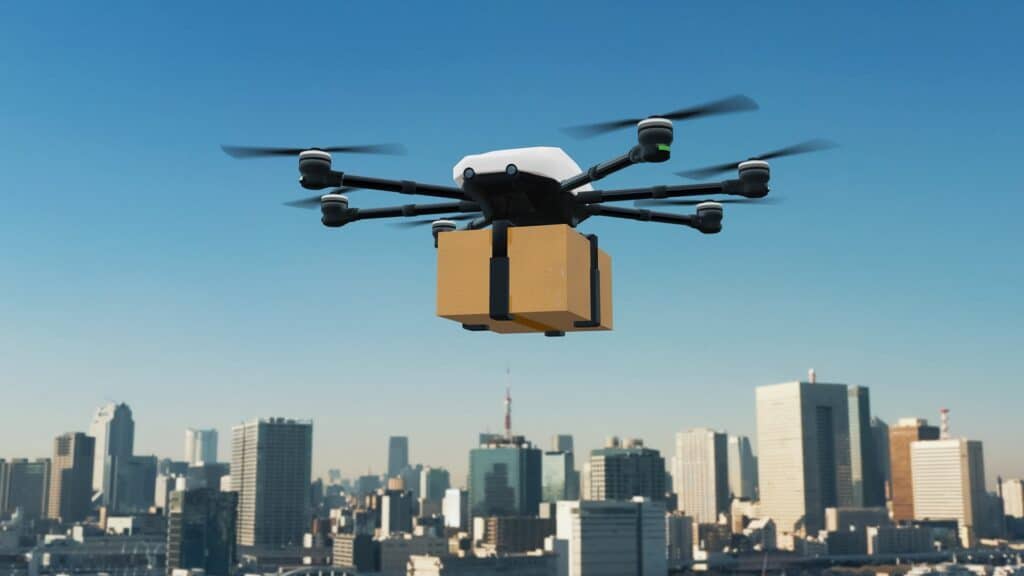The State of the Autonomous Last-Mile Market in 2023

Wise Systems

Modern technology makes it possible to automate many tasks, enabling companies in various industries to cut costs by streamlining processes that were once tedious and time-consuming for humans to perform. In the supply chain and logistics market, last-mile delivery is one such tedious and time-consuming process. It’s an area of focus for efficiency and cost-cutting measures, giving rise to a growing autonomous last-mile market.
In this guide, we’ll explore the current state of the autonomous last-mile market, including the market size, growth projections, and the types of tools and technologies that are streamlining and automating last-mile delivery processes.
In this article:
- What is Autonomous Last-Mile Delivery?
- Autonomous Last-Mile Market Size
- What Processes Can Be Automated in the Last Mile?
- Autonomous Last-Mile Technologies
- Final Thoughts
- Frequently Asked Questions
What is Autonomous Last-Mile Delivery?

Autonomous last-mile delivery refers to the use of automated vehicles or drones to complete the final segment of a delivery’s journey, bringing the package from a local hub or distribution center directly to the customer’s doorstep without human intervention. It also encompasses software solutions that automate processes such as dispatch and routing to improve resource utilization and operational efficiency.
This part of the delivery process is termed the “last mile,” and it’s the most complex and expensive part of the delivery chain. As it accounts for more than 50% of total delivery costs, effective automation can yield significant efficiency and cost-saving benefits for businesses.
Autonomous Last-Mile Market Size
Autonomous routing and dispatching is not only necessary, but is the future for many last-mile operations. Learn where your last-mile operations are today and make your AD&R plan. https://t.co/s5fAP9Ms4M pic.twitter.com/DK5fLF2Juq
— Wise Systems (@goWiseSystems) April 24, 2023
While significant milestones have already been reached, the autonomous last-mile delivery market is still in its infancy and is experiencing rapid growth. The global market for autonomous last-mile deliveries is projected to expand from $0.9 billion in 2023 to $4.2 billion by 2030, according to Markets and Markets. This represents a Compound Annual Growth Rate (CAGR) of 22.7% within the forecast period.
This growth can be attributed to the continuous technological advancements in autonomous vehicles and drones, increasingly becoming the cornerstone of modern, efficient, and innovative delivery services. Additionally, sophisticated software solutions, such as AI-driven autonomous dispatch and routing software, streamline processes and support data-driven decision-making.
What’s Driving Growth in the Autonomous Last-Mile Market?

The biggest driver of growth in the autonomous last-mile market is the explosive growth of e-commerce. While e-commerce has been growing consistently for the past decade, the COVID-19 pandemic poured fuel on the e-commerce fire. The need to maintain physical distance and adhere to lockdowns and other restrictions forced many physical stores to close temporarily, limiting consumers’ options to purchase goods and services in person and forcing a shift to e-commerce.
The pandemic sparked an increase from $598 billion 2019 to $817 billion in 2020, according to Insider Intelligence. That’s a growth of 36.7% in a single year. However, U.S. e-commerce and retail sales are projected to shift back to their pre-pandemic trajectories in the coming years, with e-commerce sales expected to reach $1.137 trillion in 2023, a 9.3% growth from 2022.
It’s not just the pandemic that’s driving innovation in last-mile delivery; consumer expectations are also changing. The Retail Industry Leaders Association (RILA) reports that two- to three-day delivery is the baseline expectation for more than 90% of consumers, and nearly two-thirds (30%) expect same-day delivery.
What’s more, 85% of consumers say they’ll search for other retailers for faster shipping, and according to McKinsey & Company, 46% of respondents to one survey said they’ve abandoned shopping carts if shipping times were too long or were not disclosed during the checkout process. In contrast, a survey conducted by Digital Commerce 360 found that fast shipping has led 68% of consumers to make an online purchase.
Not only are businesses facing pressure from consumers to provide fast and accurate delivery, but it’s also a competitive advantage. In fact, as more companies adopt technologies that enable them to meet these demands, it’s crucial to invest in autonomous last-mile solutions to keep pace with the competition.
What Processes Can Be Automated in the Last Mile?

Automation in last-mile delivery can profoundly enhance efficiency, reduce costs, and improve customer satisfaction. Here’s a breakdown of some of the processes that can be automated in last-mile delivery.
- Route Planning and Optimization: Automated systems analyze traffic patterns, weather conditions, and other variables to determine the fastest and most efficient delivery routes. Some solutions can also make real-time adjustments to accommodate unexpected challenges such as road closures.
- Scheduling and Timing: Similar to route planning and optimization, automated scheduling systems optimize delivery schedules based on customer availability and preferences, while dynamic rescheduling allows for automatic adjustments for delays or changes.
- Customer Communication: These technologies send automated notifications to customers about the status of their delivery, estimated arrival times, and any delays or changes. Real-time tracking allows customers to know where their package is at all times. In addition, automated surveys and forms are used to gather customer feedback post-delivery.
- Sorting and Packaging: Automated sorting systems sort packages based on size, weight, and destination to streamline the delivery process. Earlier in the logistics process, robotic assistance is often used to assist in the packaging and labeling of goods.
- Vehicle Loading: Robots are used to load packages onto delivery vehicles, minimizing human error and maximizing efficiency.
- Delivery: Autonomous vehicles and drones transport and deliver packages without human drivers. Robots or drones carry packages from the vehicle to the customer’s doorstep.
- Proof of Delivery: Photos or digital customer signatures are used as proof of delivery, and automated confirmation emails are sent to consumers to confirm delivery and provide any necessary follow-up information.
Each of these automated processes aims to streamline the last-mile delivery, ensuring that it’s as quick, accurate, and customer-friendly as possible. By embracing automation, businesses can navigate the complexities of last-mile delivery more effectively, adapting to challenges and meeting evolving customer expectations.
Autonomous Last-Mile Technologies

A number of innovative technologies and tools support the automated processes described above. Here’s an overview of some of the types of autonomous last-mile technologies available to businesses today.
Autonomous Vehicles and Drones
Autonomous vehicles and drones are used in place of or to augment the work of humans to transport packages. Examples of vehicles and drones that support autonomous last-mile delivery include:
- Autonomous Ground Vehicles (AGVs): Self-driving vans and cars equipped with sensors, cameras, and GPS to navigate the roads.
- Delivery Drones: Aerial drones that can bypass road traffic, delivering packages to customer doorsteps directly from the sky.
- Sidewalk Robots: Small robots that navigate sidewalks and pedestrian paths to deliver packages.
Robotic Manipulators and Grippers
Robotic manipulators and grippers are necessary tools that enable robots to grasp and handle packages during order picking, sorting, and delivery processes. Examples include:
- Robotic Arms: Enable the handling of packages, ensuring they are picked and placed accurately and gently.
- Advanced Grippers: Allow drones and robots to grasp and release packages securely.
Navigation and Routing Technologies
Some navigation and routing technologies, such as GPS, have been around for several years, but these tools remain essential in autonomous last-mile delivery. Newer technologies leverage real-time data to adapt readily to unexpected changes. Examples include:
- Global Positioning System (GPS): Helps autonomous vehicles and drones navigate the delivery routes.
- Advanced Mapping Technologies: Real-time updates and detailed maps assist in accurate navigation.
Sensors and Cameras
Sensors and cameras are crucial tools in autonomous last-mile delivery, making it possible for autonomous vehicles to safely navigate roads and paths. Examples of sensor and camera technologies that support autonomous last-mile delivery include:
- LiDAR Sensors: Measure distances and identify obstacles to ensure safe navigation of autonomous delivery vehicles.
- Computer Vision Cameras: Allow vehicles and drones to interpret and interact safely with their surroundings.
Connectivity Technologies
Connectivity technologies such as Internet of Things (IoT) devices and 5G make it possible to collect and transmit data in real-time. Examples include:
- 5G and IoT: Enhanced connectivity ensures seamless communication between vehicles, drones, and control centers.
- Vehicle-to-Everything (V2X) Communication: Allows delivery vehicles to communicate with traffic infrastructure, other vehicles, and devices.
Artificial Intelligence (AI) and Machine Learning (ML)
Artificial intelligence and machine learning technologies are transforming workflows across many industries today, and autonomous last-mile delivery is no exception. Examples include:
- Predictive Analytics: AI analyzes historical data to optimize delivery routes and predict potential delays.
- Machine Learning Algorithms: Improve decision-making and adaptability of autonomous delivery systems over time.
Data Analytics Tools
Leveraging AI and machine learning algorithms, data analytics tools collect and analyze large volumes of data, typically aggregated from multiple sources, to drive decision-making. For example:
- Big Data: Analysis of large datasets helps in optimizing routes, inventory, and overall delivery strategy.
- Real-time Analytics: Enables instantaneous decision-making and adjustments based on real-time data.
Each of these technologies plays a crucial role in enabling and optimizing the autonomous last-mile delivery process, striving for efficiency, accuracy, and customer satisfaction.
Final Thoughts
The revolution in the delivery market is not just transformative but indicative of the shifting paradigms in consumer expectations and industry standards. As companies worldwide strive for more streamlined, cost-effective, and efficient logistical operations, the autonomous last-mile delivery market is poised to deliver solutions that put these goals within reach.
The Wise Systems delivery automation platform provides a suite of valuable, user-friendly tools to support real-time, data-driven decision-making and streamline and automate tedious tasks like route planning and optimization. These solutions empower businesses to improve operational efficiency while simultaneously cutting costs and boosting customer satisfaction. Request a demo today to learn how Wise Systems can help your business stay at the forefront of the competitive landscape.
Frequently Asked Questions
How big is the autonomous last mile delivery market?
The autonomous last-mile delivery market has witnessed substantial growth in recent years, driven by advancements in technology and a shift towards automation in logistics and delivery services. The market is projected to expand from $0.9 billion in 2023 to $4.2 billion by 2030, growing at a Compound Annual Growth Rate (CAGR) of 22.7%.
What is an autonomous delivery service?
An autonomous delivery service utilizes automated vehicles, drones, or robots to transport goods and packages to customers with minimal to no human intervention. This technology-driven service aims to improve the efficiency, speed, and cost-effectiveness of deliveries, especially during the last mile, which is the final step of the delivery process where the package reaches the customer’s doorstep.
How does autonomous delivery work?
Autonomous delivery operates by leveraging a combination of technologies such as robotics, artificial intelligence, GPS, and sensors to facilitate the delivery process. Here’s an example of a typical workflow in autonomous delivery:
- A customer places an order through an app or website.
- The items are sorted, packaged, and prepared for delivery by robots or automated systems.
- Autonomous vehicles, drones, or robots are loaded with packages and dispatched for delivery.
- These autonomous agents navigate the predefined routes using advanced mapping and GPS technologies.
- The package is delivered to the customer’s doorstep, and proof of delivery is collected digitally.
- The autonomous agent returns to the hub or warehouse for the next assignment.
What are the risks of autonomous delivery?
Autonomous delivery services, while promising and innovative, come with their share of risks such as:
- Technical failures: Malfunctions in navigation systems, sensors, or other technologies can lead to delivery errors or accidents.
- Security concerns: Automated systems could be vulnerable to hacking or unauthorized access, raising concerns about the safety and privacy of customer information and packages.
- Regulatory challenges: Lack of clear and consistent regulations may pose challenges in the operation and expansion of autonomous delivery services.
- Safety: Ensuring the safe operation of autonomous vehicles and drones amidst traffic, pedestrians, and varying weather conditions is essential.
What are the pros and cons of autonomous delivery?
Pros of Autonomous Delivery:
- Efficiency: Autonomous delivery can streamline the delivery process, reducing delays and improving service quality.
- Cost-effectiveness: Reduction in human labor can lead to cost savings in the long run.
- Sustainability: Many autonomous delivery options, like drones and electric vehicles, are eco-friendly, reducing carbon emissions.
- Availability: Autonomous delivery services can operate round the clock, increasing availability and convenience for customers.
Cons of Autonomous Delivery:
- Initial costs: The initial investment required for technology, vehicles, and infrastructure is substantial.
- Job displacement: Automation could lead to a reduction in jobs for drivers and delivery personnel.
- Limited capabilities: Current autonomous delivery services might be limited to specific areas and types of goods due to technological and regulatory constraints.
- Dependence on technology: A heavy reliance on technology makes systems vulnerable to technical glitches and cybersecurity threats.

